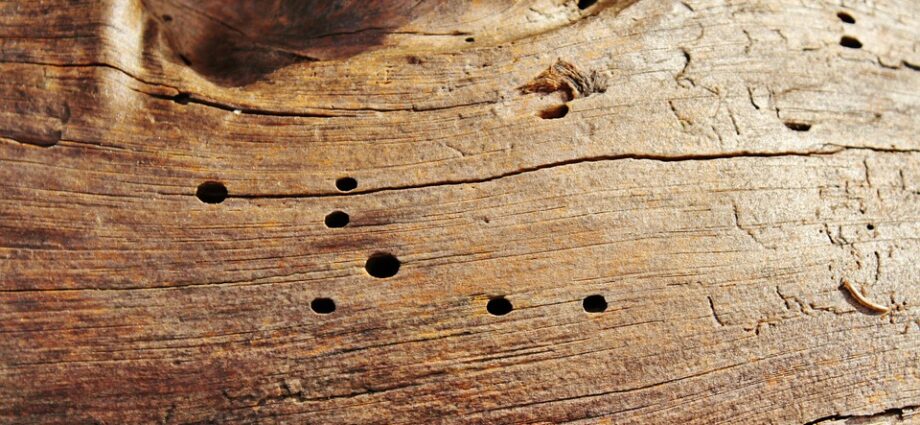Welcome to our blog post on how to control leafhopper populations in vineyards and orchards! If you’re a grower or farmer, you know just how pesky these tiny insects can be. Leafhoppers may seem innocent enough, but their feeding habits can wreak havoc on your crops, causing stunted growth, discolouration, and even the spread of diseases.
But fear not! In this article, we will equip you with the knowledge and strategies to manage leafhopper populations effectively and protect your precious plants. From recognizing leafhopper damage to implementing integrated pest management techniques, we’ve got you covered.
So grab a cup of coffee and settle in as we dive into the fascinating world of leafhoppers and discover how to keep them under control. Let’s get started!
How to Control Leafhopper Populations in Vineyards and Orchards?
Leafhoppers are small, winged insects that belong to the family Cicadellidae. They are found in various habitats around the world and can be a common pest in vineyards and orchards. These tiny creatures feed on plant sap by piercing through leaves with their sharp mouthparts, causing damage to the foliage.
Leafhoppers come in a wide range of colours and patterns, making them sometimes hard to spot. They have distinctive hopping behaviour, which is where they get their name from. Despite their small size, leafhoppers can reproduce rapidly, leading to large populations if left unchecked.
In addition to directly damaging plants through feeding, leafhoppers also pose indirect threats as carriers of plant diseases such as phytoplasmas and viruses. It is crucial for growers to understand these pests’ biology and behaviour to control their populations effectively and prevent potential crop losses.
Recognizing Leafhopper Damage and Detecting Infestations
Leafhoppers may be small, but their damage can have a big impact on vineyards and orchards. Recognizing leafhopper damage is crucial for early detection and effective pest management. So, how do you know if your plants are being targeted?
Keep an eye out for yellowing or browning of leaves. Leafhoppers pierce plant tissues to feed on the sap, causing discolouration and wilting. This type of damage is often mistaken for nutrient deficiencies or drought stress.
Look for stippling or tiny white specks on the leaves. These are caused by the leafhoppers’ feeding activity, as they puncture cells to extract sap from the plants.
Pay attention to any curling or distortion of leaves. Leafhopper feeding can disrupt cell growth and development, leading to abnormal leaf shapes.
Regular scouting and monitoring are essential in detecting leafhopper infestations early on. Use sweep nets or sticky traps placed strategically around your vineyard or orchard to catch these pests in action.
Remember that prevention is key when it comes to managing leafhopper populations effectively!
Prevention and Cultural Control Methods
When it comes to controlling leafhopper populations in vineyards and orchards, prevention is key. By implementing cultural control methods, you can create an environment that is less attractive to these pesky pests.
Maintaining good plant health is essential. Healthy plants are more resistant to infestations and can better tolerate damage caused by leafhoppers. Regularly fertilizing and watering your plants will ensure they have the nutrients they need to thrive.
Proper sanitation practices can help reduce leafhopper populations. Remove any weeds or debris around the vineyard or orchard, as these can serve as breeding grounds for the pests. Additionally, regularly prune and remove any infected or damaged plant material to prevent further spread of infestations.
Consider using physical barriers such as netting or screens to protect your crops from leafhoppers. These barriers can help block their entry into the growing area and minimize the risk of infestation.
By incorporating these prevention and cultural control methods into your vineyard or orchard management practices, you can effectively reduce leafhopper populations without relying solely on chemical pesticides.
Integrated Pest Management Strategies for Leafhoppers
Integrated Pest Management strategies are an effective and sustainable approach for controlling leafhopper populations in vineyards and orchards. By combining various methods, growers can minimize the reliance on chemical pesticides while still maintaining healthy crops.
Biological control is a key component of IPM. Beneficial insects such as ladybugs, lacewings, and parasitic wasps can naturally prey upon leafhoppers and help keep their numbers in check. Encouraging these natural predators by providing them with suitable habitats and avoiding broad-spectrum insecticide use is crucial for their success.
Cultural practices play a vital role in managing leafhoppers. Regular scouting of fields or orchards allows early detection of infestations so that timely action can be taken. Removing weeds around the perimeter of the crop reduces alternate host plants for leafhoppers to feed on.
If population levels reach economic thresholds despite preventive measures, targeted pesticide applications may be necessary. However, it is important to choose selective insecticides that have minimal impact on beneficial organisms while effectively controlling leafhoppers.
By implementing these integrated pest management strategies, growers can effectively control leafhopper populations without causing harm to the environment or compromising the quality of their harvests.
Conclusion and Final Thoughts
Controlling leafhopper populations in vineyards and orchards is crucial for maintaining the health and productivity of these agricultural landscapes. By recognizing leafhopper damage and detecting infestations early on, growers can take proactive measures to prevent further spread.
Some key strategies for managing leafhopper populations include using natural predators, planting cover crops, and implementing cultural practices such as pruning and proper irrigation. In some cases, chemical control may also be necessary, but it is important to only use pesticides that are specifically labelled for leafhoppers and to follow all safety precautions.
Overall, a combination of these methods can help keep leafhoppers under control and ensure the success of vineyards and orchards. Regular monitoring and careful management are essential in preventing significant damage from these pests. With proper management, growers can maintain healthy crops and continue to produce high-quality fruits and wines for consumers to enjoy.

